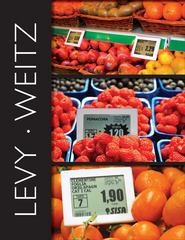Question
Phase II Progressive project management Identify all tasks and times necessary to complete the project, and provide estimates based on skill and availability of assigned
Phase II Progressive project management
Identify all tasks and times necessary to complete the project, and provide estimates based on skill and availability of assigned resources
Abstract
The aviation industry seeks alternatives to fossil fuels to reduce its environmental impact. Biofuels offer promise in this regard, derived from biomass like algae, waste oils, and plants. This abstract provides an overview of biofuel use in aviation, focusing on production, performance, and environmental benefits. Despite potential, challenges like feedstock availability, technology, cost, and certification persist. Collaboration and innovation are key to overcoming these hurdles for a sustainable aviation future.
Tasks
Bio-aviation fuel, a synthesized paraffinic kerosene (SPK) derived from biomass, is blended with conventional jet fuel (CJF) according to ASTM D7566-19a standards. Five types of SPK, along with their specified volume fractions for blending, are certified for use. These SPK types are produced through various production platforms, as outlined in Table 1. The hydroprocessed esters and fatty acids production pathway (HEFA) involves deoxygenation of oils and fats followed by hydroprocessing to produce HEFA-SPK. Other oil-to-jet platforms include hydrothermal liquefaction of plant or algal oil and fast pyrolysis of cellulose, followed by jet fuel upgrading. The gas-to-jet platform converts biomass into syngas through gasification, which is then converted into paraffinic and olefinic hydrocarbons via the Fischer-Tropsch production pathway (FT). These hydrocarbons are further hydroprocessed to produce FT-SPK. FT-SPK/A is a variation produced by the same platform, with the addition of alkylated and bio-based aromatics. In the alcohol-to-jet production platform (ATJ), biomass undergo hydrolysis to produce fermentable sugars, which are then fermented into alcohols. These alcohols undergo dehydration, oligomerization, hydrogenation, and fractionation to produce ATJ-SPK. The sugar-to-jet production platform, or direct sugar-to-hydrocarbon jet fuel synthesis (DSCH), involves hydrolysis of fermentable sugars, fermentation to farnesene, hydroprocessing of farnesene, and fractionation to produce SIP-SPK. Other sugar-to-jet platforms involve catalytic reforming of sugar or sugar intermediates, followed by upgrading to jet fuel through aqueous phase reforming and direct sugar-to-hydrocarbons processes.
Skill & Availability
Stringent sustainability standards govern Sustainable Aviation Fuel (SAF), requiring a minimum greenhouse gas emission reduction of 50% compared to current oil-based jet fuels. However, studies indicate potential reductions of up to 80% when compared to traditional jet fuels. The forthcoming generation of sustainable aviation fuels holds even greater promise, potentially achieving CO2 reductions ranging from 85% to 95%. These advanced fuels will be derived from a variety of biomass sources, including algae, crop residues, animal waste, forestry residue, as well as everyday waste such as product packaging and food leftovers.
According to IATA, Sustainable Aviation Fuel (SAF) produced from biomass essentially offsets the carbon dioxide emitted during its combustion phase with the CO2 absorbed by the plants during their growth period. This implies that SAF derived from biomass can be considered carbon neutral. However, emissions are generated during the production of SAF due to the energy required for transporting raw materials and refining the fuel.
References
Doliente, S. S., Narayan, A., Tapia, J. F. D., Samsatli, N. J., Zhao, Y., & Samsatli, S. (2020, May 11).Bio-aviation fuel: A comprehensive review and analysis of the supply chain components. Frontiers. https://www.frontiersin.org/articles/10.3389/fenrg.2020.00110/full
Demonstrate how the project leader has established feedback loops and regular meetings/communication channels with team members and stakeholders .Ensure adjustments are made so the project will come to full fruition in the highest quality,
please provide sources used .
Step by Step Solution
There are 3 Steps involved in it
Step: 1

Get Instant Access to Expert-Tailored Solutions
See step-by-step solutions with expert insights and AI powered tools for academic success
Step: 2

Step: 3

Ace Your Homework with AI
Get the answers you need in no time with our AI-driven, step-by-step assistance
Get Started


